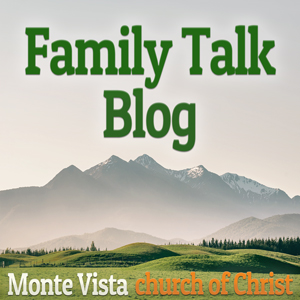God ordered specific apparel to be made for Aaron and his male decedents while they ministered in the Tabernacle and later in the Temple, which would reflect the significance of the job. “You shall make holy garments for Aaron your brother, for glory and for beauty” (Exodus 28:2). When we discuss what God intends by “glory and beauty,” we must remember that this is what God has judged glorious and beautiful. This is not the elaborate superficial beautification considered attractive by the world. God has determined that the priestly garments reflect His faultlessness, praise, and glory. The priest’s garments present the pure, honorable, and holy appearance God expects for His servants.
Of the many priests serving in the Tabernacle, only one wore multi-colored, bejeweled garments. Only the High Priest carried the gold and jewels that set him apart from all other priests and showed his relationship with God. Physical clothes to emphasize his physical duties toward God for Israel. The Hebrew writer describes our High Priest this way. “We have a great high priest who has passed through the heavens, Jesus the Son of God” (Hebrews 4:14-15). Paul writes of Jesus’ complete capabilities in his letter to the Colossians. “For it was the Father’s good pleasure for all the fullness to dwell in Him, and through Him to reconcile all things to Himself, having made peace through the blood of His cross; through Him, I say, whether things on earth or things in heaven” (Colossians 1:19-20).
Moses anointed and sanctified his brother Aaron as the first High Priest of Israel. At his death, the office of the High Priest, and all the garments, were transferred to his oldest son. The High Priest represented all of Israel and acted on their behalf. Unlike Aaron, our High Priest lives forever, “having become a high priest forever according to the order of Melchizedek” (Hebrews 6:19-20). “Having neither beginning of days nor end of life, but made like the Son of God, he remains a priest perpetually” (Hebrews 7:3). The Syriac translations render this passage to explain, “Whose father and mother are not inscribed among the genealogies; and therefore, it was not known who he was.”
Arron, as High Priest, entered the Most Holy place of God’s presence once each year. The LORD said to Moses: “Tell your brother Aaron that he shall not enter at any time into the holy place inside the veil, before the mercy seat which is on the ark, or he will die; for I will appear in the cloud over the mercy seat. “Aaron shall enter the holy place with this: with a bull for a sin offering and a ram for a burnt offering. “He shall put on the holy linen tunic, and the linen undergarments shall be next to his body, and he shall be girded with the linen sash and attired with the linen turban (these are holy garments). Then he shall bathe his body in water and put them on” (Leviticus 16:2-4).
But Jesus entered the true Holy Place of God’s presence in heaven (Acts1:9). In a vision, John saw the risen Christ glorified at God’s throne in heaven. (Revelation 5: 6-12). Our High Priest does not visit a shadow of God’s presence but resides forever in God’s presence. The Hebrew writer points out that because Christ is there, we have great assurance that we also can be there. “This hope we have as an anchor of the soul, a hope both sure and steadfast and one which enters within the veil, where Jesus has entered as a forerunner for us, having become a high priest forever according to the order of Melchizedek” (Hebrews 6:19-20).
When Aaron entered behind the veil, he carried on each shoulder an onyx stone, each one engraved with the names of six of the tribes of Israel, and on the front of the ephod rested the breastplate, containing twelve precious stones, each bearing the name of a tribe. Thus the high priest carried the tribes of Israel before God on his shoulders, the place of strength, and over his heart, the place of affection (Genesis 28:9-29). On his head was the golden crown with the words “Holiness to the Lord.” Jesus, however, carries the names of those washed by his blood as members of His body. Christians are all part of the body of Christ as evidence that He died for them (Romans 7:4). “By this will we have been sanctified through the offering of the body of Jesus Christ once for all. Every priest stands daily ministering and offering time after time the same sacrifices, which can never take away sins; but He, having offered one sacrifice for sins for all time, sat down at the right hand of God, waiting from that time onward until His enemies be made a footstool for His feet” (Hebrews 10:10-13).
